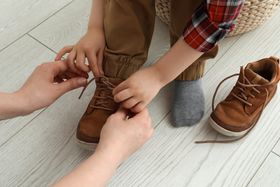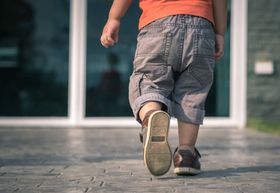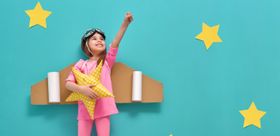Are My Baby’s Feet Swollen or Fat?
Learn to tell the difference between swollen and fat baby feet with our quick guide.
Updated December 17, 2024.

Who can resist those adorable, chubby baby feet? But have you ever wondered why they’re so soft? Your baby’s feet are made mostly of fat, muscles, and tendons, which will eventually turn into bones.
There’s also a layer of fat under the arch that makes them even softer. But it’s important to know the difference between ‘fat’ and ‘swollen’ feet, so let's find out how you can tell.
» Explore a range of orthopaedic shoes for proper baby foot development
Characteristics of Fat Baby Feet
- Appearance: Puffy baby feet typically have a soft, rounded look.
- Texture: The skin on fat baby feet is generally smooth.
- Mobility: Fat feet do not usually exhibit any signs of discomfort or restricted movement.
- Developmental Context: Fat feet are part of normal growth and development.
Characteristics of Swollen Baby Feet
- Appearance: Swollen feet may appear puffy or enlarged compared to their usual size.
- Symptoms: Accompanying signs of swelling can include redness, warmth, or tenderness in the affected area.
» Discover the best way to treat flat feet in children
How to Tell if Your Baby’s Feet Look Swollen
- Visual Inspection: Look for signs of puffiness or unusual skin texture. Fat feet will appear rounded and soft without signs of tension in the skin.
- Touch Test: Gently press on the foot. If it leaves an indentation (a sign of edema), it may be swollen rather than just fat.
- Movement Observation: Check if the baby can move their toes and feet comfortably. Swollen feet might restrict movement due to discomfort.
- Contextual Consideration: Consider recent activities—has the baby been wearing tight footwear? Have there been any injuries? These factors can help determine if swelling is likely.
- Consult a Pediatrician: If there are concerns about swelling that persists or is accompanied by other symptoms, it’s important to consult a healthcare provider for further evaluation.
» Learn how to stretch out your kid's shoes
First Steps in the Right Shoes
It's not just about chubby baby feet, but the right kind of support for those adorable, developing tootsies. First Walkers' range of shoes for prewalkers is your ideal choice. With their supple design, these shoes cradle your baby's feet in comfort.
The easy-to-fasten straps ensure a snug fit while the cosy sole pampers those tender feet. So, let your baby embrace their first steps, confident and carefree.
» Help your kid's feet develop properly with orthopaedic shoes
Disclaimer: First Walkers' information is intended for educational and informational purposes related to toddler footwear and feet. We encourage you to consider individual circumstances and consult qualified orthopaedists about specific conditions.
Related Articles

10 Best Kids' Shoes for Orthotics: Comfort, Support, & Durability
Amy Elder
December 6, 2024

Why Orthopaedic Shoes Are a Game-Changer for Kids
Babafemi Adebajo
October 2, 2023

How to Prevent Kids Foot Injuries: Essential Tips for Parents
Leah Alexander
March 6, 2024

7 Best Kids' Shoes With Cool Unique Animation Designs
Jasrah Javed
May 9, 2024

8 Best High-Top Baby Shoes for Walking: Optimal Support & Comfort
Jasrah Javed
December 5, 2024
Related Posts
Bhashwati Deb Barma
10 Best Shoes for Baby Foot Development: Support Happy Feet
Jasrah Javed
Do All Babies Initially Have Flat Feet?
Dr. Leah Alexander
Do Babies Need to Wear Socks?
Babafemi Adebajo
Do You Need a Prescription for Orthopaedic Shoes?
Jasrah Javed
What Causes Babies’ Feet to Turn Red?
Babafemi Adebajo
Why Do My Toddler’s Feet Look Yellow?
Babafemi Adebajo
